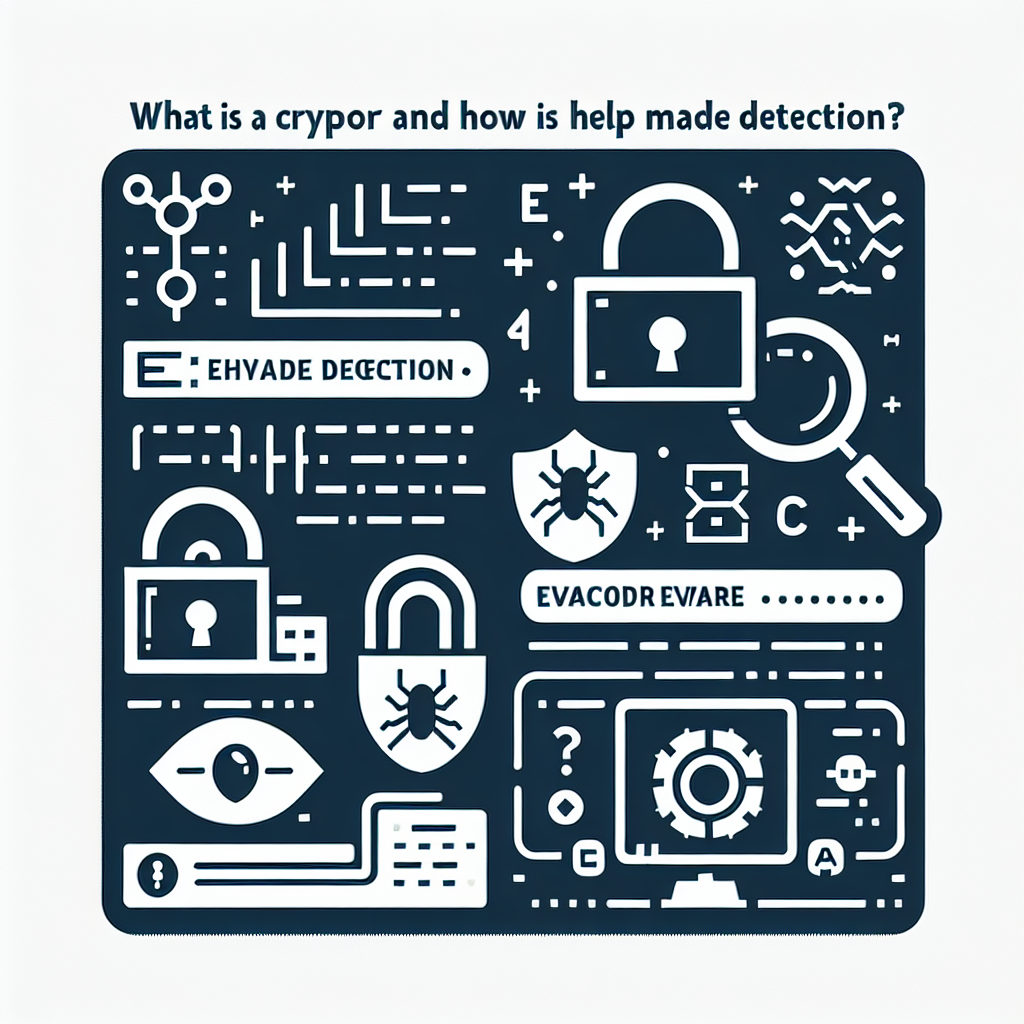
Cybersecurity teams face a growing problem: cryptors are a common method attackers use to conceal malicious code and delay detection. These tools wrap malware in encryption or packing layers that are only revealed when the program runs.

A cryptor is a tool that encrypts or obfuscates malware so it appears harmless to scanners. Attackers use cryptors to mask the intent and structure of malicious binaries until they execute, often pairing them with a small loader that decrypts the payload in memory. This keeps static scanners and signature-based tools from recognizing known threats. Cryptors can use simple XOR routines or full AES encryption depending on the operator’s sophistication. Their purpose is to prevent analysis and buy time for the attack to complete.
A cryptor’s goal is evasion, not data protection for users. While legitimate encryption protects privacy and integrity, cryptors are designed to hide code semantics from security tools. They often include packing, string encryption, and anti-analysis checks that legitimate tools don’t need. The encryption used by cryptors may also be reversible at runtime by a stub or loader. In short, cryptors weaponize encryption to avoid detection rather than to secure information.
Attackers use cryptors because they reliably defeat static detection and signatures. By changing the on-disk representation, cryptors prevent scanners from matching files to known malware hashes or patterns. They also give attackers time to execute payloads like ransomware or loaders before defenders can respond. In many cases cryptors are part of a multi-stage infection that evades sandboxing and slows down incident response. For organized threat actors, cryptors are a cost-effective way to increase campaign success rates.
Cryptors use a mix of encryption, packing, and runtime tricks to stay hidden. Common methods include AES or XOR encryption, compressing executables (packing), and encrypting API names and strings. Many cryptors include anti-debugging checks and sandbox-detection routines to avoid analysis. Some implement polymorphism so each build looks unique, defeating signature-based defences. Combined, these techniques make static analysis and rule-based detection unreliable.
At run time a loader or stub decrypts the payload in memory and transfers control to it. The cryptor keeps the malicious payload scrambled on disk and only reconstructs it inside memory where static tools can’t easily inspect it. This dynamic decryption typically happens quickly and can be triggered by environment checks. Once decrypted, the original malware runs as if it were never obfuscated. That in-memory execution is a primary reason cryptors evade many endpoint protections.
Cryptors, packers, and obfuscators overlap but serve different primary goals. Cryptors focus on hiding malicious intent through encryption; packers compress or wrap binaries to reduce size and obscure structure; obfuscators change code syntax to make analysis harder without necessarily encrypting it. In practice malware authors mix elements from all three to increase complexity. Cryptors are typically the most aggressive at evasion because they decrypt only in memory.
Cryptors range from simple scripts to commercial kits advertised on underground forums. You’ll see custom cryptors tailored for targeted attacks, FUD (fully undetectable) cryptors marketed to criminals, cracked or repurposed commercial tools, and polymorphic cryptors that change on each build. Polymorphic and custom cryptors are particularly challenging because they avoid reuse patterns. The diversity of cryptors means defenders must watch for tactics and behaviors, not just file signatures.
Ransomware, loaders, and banking trojans frequently use cryptors to delay detection. Families such as TrickBot, Emotet, and QakBot have used obfuscation and packing techniques to hide initial payloads. Zero-day exploits also benefit from cryptors because they give attackers a larger window before detection. Any multi-stage campaign that prioritizes persistence or covert data exfiltration may include cryptors as part of its toolset.
Detecting cryptor-protected threats requires behavior-focused monitoring and memory inspection. Look for unusual runtime behavior like unexpected child processes, anomalous network connections, or rapid file encryption activity. EDR solutions that inspect memory and monitor API calls can catch the decrypted payload once it executes. Threat hunters also benefit from telemetry that highlights packing indicators, frequent unpacking artifacts, and sandbox-evading checks. Combining telemetry sources reduces reliance on static signatures.
Effective defenses combine prevention, detection, and rapid response. Enforce least privilege, patching, and application allowlisting to reduce the attack surface. Deploy EDR with memory inspection and behavior analytics to catch runtime decryption and execution. Maintain reliable backups and network segmentation to limit damage if cryptor-enabled ransomware succeeds. Regular threat hunting and playbooks for containment shorten dwell time and improve recovery.
Analysts use dynamic analysis, memory captures, and sandboxing to force decryption and observe payloads. Techniques include running samples in instrumented environments, dumping process memory after the stub runs, and reconstructing decrypted binaries. Tools like debuggers and unpackers help, but anti-debugging checks often complicate the work. Collaboration and sharing IOCs accelerates detection for other defenders after recovery.
Cryptors complicate detection but are not foolproof and add operational costs for attackers. Advanced EDR, anomaly-based detection, and good hygiene can still expose cryptor-protected attacks. Cryptors can also introduce bugs or performance issues that reveal their presence. Finally, once a specific cryptor or loader is understood and shared, defenders can hunt for its behavioral artifacts. That’s why incident response and telemetry sharing remain effective counters.
Preparation focuses on reducing success conditions and improving response speed. Patch critical systems, restrict admin privileges, and enforce strong backup policies. Invest in EDR with in-memory visibility, keep detection rules tuned to behavioral patterns, and run regular tabletop exercises. Encourage sharing of cryptor artifacts with peers and services like Palisade to improve community defenses — for practical guidance, visit Palisade email security tools.
For further reading and tools to assess email and endpoint risk, head to Palisade.